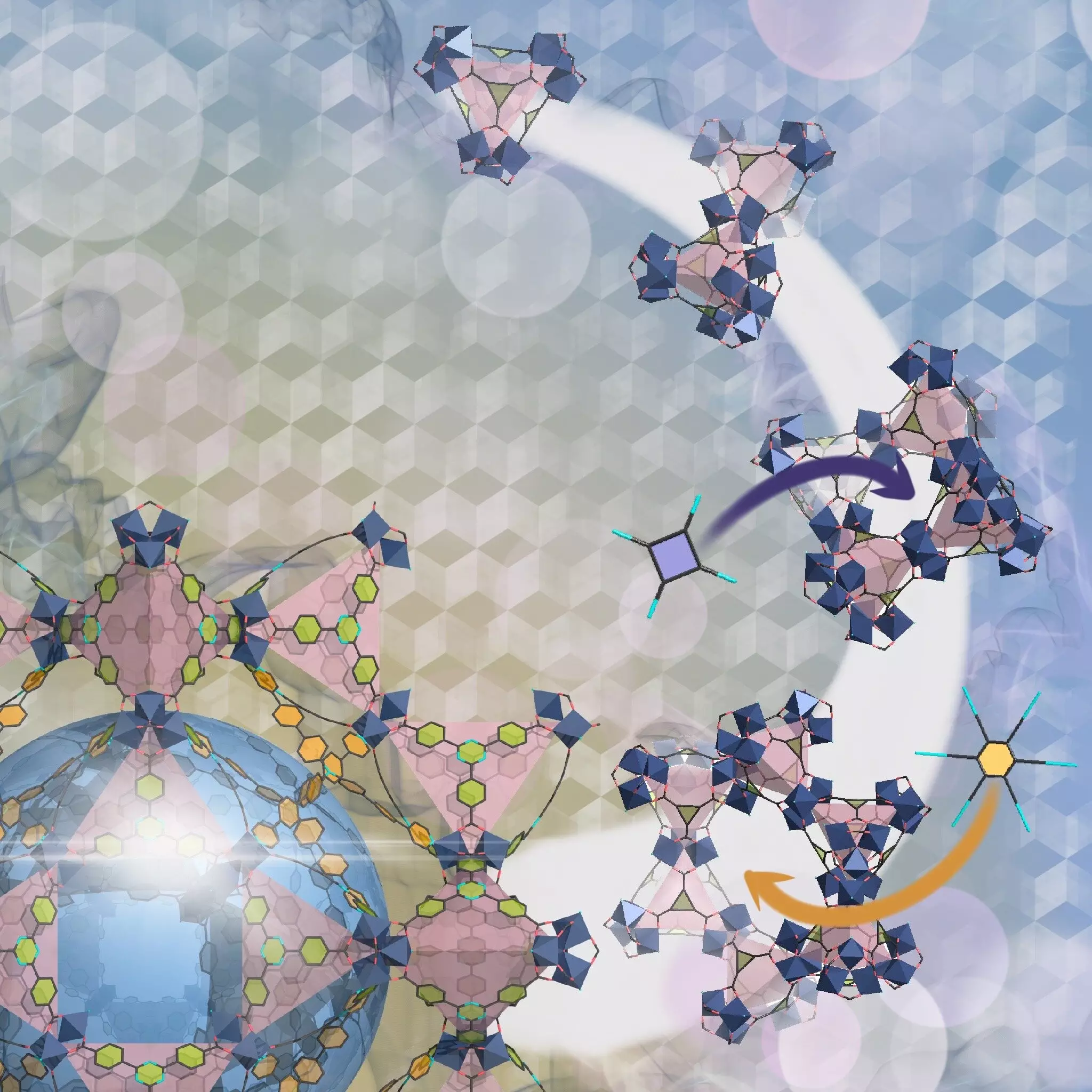

The field of material science constantly seeks new ways to design structures with precise control and tailor-made properties. In the realm of metal-organic frameworks (MOFs), a groundbreaking technique has been developed inspired by the ancient art of constructing arched stone windows. This innovative method employs a molecular version of an architectural arch-forming template to shape MOFs with specific pore windows. The applications of these tailored nanoscale windows span a wide range of industries, from gas separation to medical advancements.
Achieving precise control over structure formation has long been a challenging goal in new structure design. However, the concept of using a centering formwork approach presents a promising solution. Reticular chemistry, the assembly of molecular building blocks into porous crystalline materials like MOFs, can greatly benefit from this precise control. The starting point of this research was a zeolite-like MOF with pentagonal windows framed by supertetrahedra (ST) building blocks. The objective was to transform this well-known topology by designing centering structure-directing agents (cSDAs) to modify the ST arrangement and create windows of new shapes and sizes.
The size and volume of MOF pores play a critical role in determining their applications. By utilizing different sets of cSDAs, the research team successfully created MOFs with both small and large windows. Importantly, one of these engineered MOFs, Fe-sod-ZMOF-320, exhibited the highest oxygen adsorption capacity of any MOF known. This property holds immense potential in the medical and aerospace sectors, where increased oxygen storage capabilities can enhance transportation efficiency. Additionally, these ZMOFs displayed excellent performance in methane and hydrogen storage, indicating their suitability as potential fuels. Narrow-windowed ZMOFs within the same family exhibited the potential for gas separation in molecular mixtures.
The incorporation of the cSDA concept offered several key benefits that significantly improved the performance of MOFs. By partitioning large windows into smaller ones, the cSDAs showed promise for chemical separations. Furthermore, the additional internal pore surface increased gas storage capacity, while reinforcing the MOF structure enhanced the material’s stability. These advantages make the centering approach a powerful strategy in reticular chemistry, providing opportunities for custom-made MOFs that can contribute to energy security and environmental sustainability.
The marriage of a centuries-old architectural technique and modern material science has resulted in a groundbreaking method for creating tailored nanoscale windows in metal-organic frameworks. The precision control achieved through centering formwork templates opens up new possibilities for the design and synthesis of MOFs with desired pore shapes and sizes. The diverse applications of these engineered MOFs range from gas separation to medical advancements, offering solutions that can revolutionize various industries. The cSDA concept amplifies the performance of MOFs, enhancing their stability, gas storage capacities, and chemical separation capabilities. As we continue to explore the potential of reticular chemistry, the centering approach holds great promise for a future of tailored, high-performing MOFs that drive progress in energy security and environmental sustainability.
Rogue waves have long been a subject of fascination and terror in maritime lore. These…
As the world grapples with public health challenges, especially those posed by infectious diseases, the…
The Sombrero Galaxy, also known as Messier 104, embodies a breathtaking blend of spirals and…
In recent advances in quantum electronics, a groundbreaking discovery leveraging the concept of kink states…
In the intricate tapestry of nature, ice often exists in a delicate balance with liquid…
In an astonishing event that captured global attention, a rogue object from beyond our Solar…
This website uses cookies.